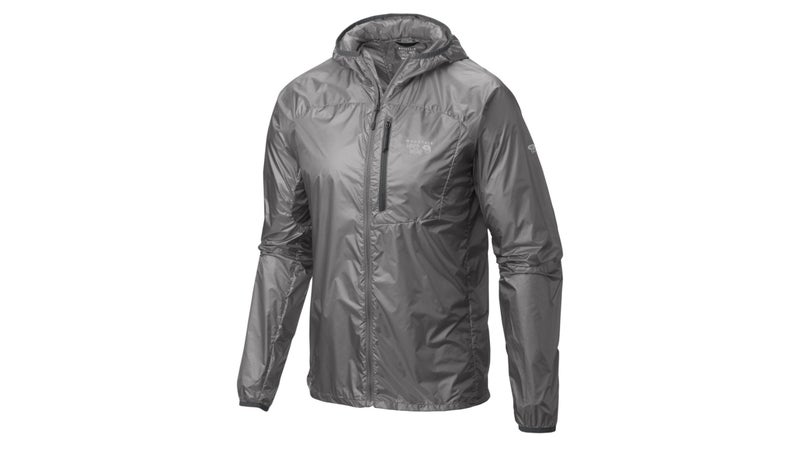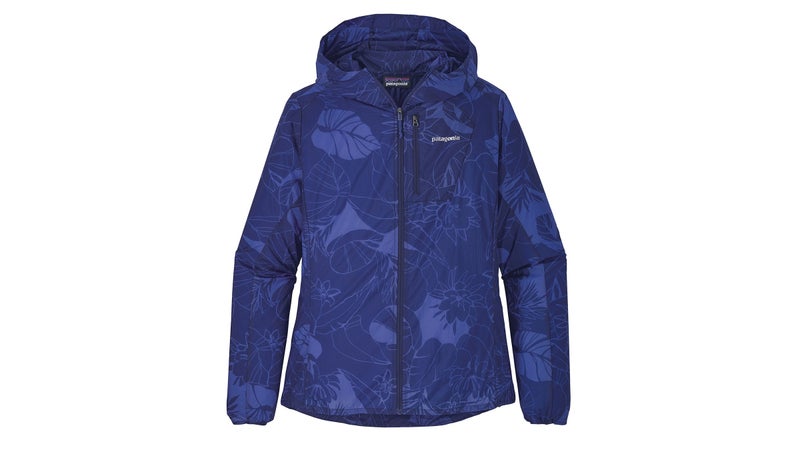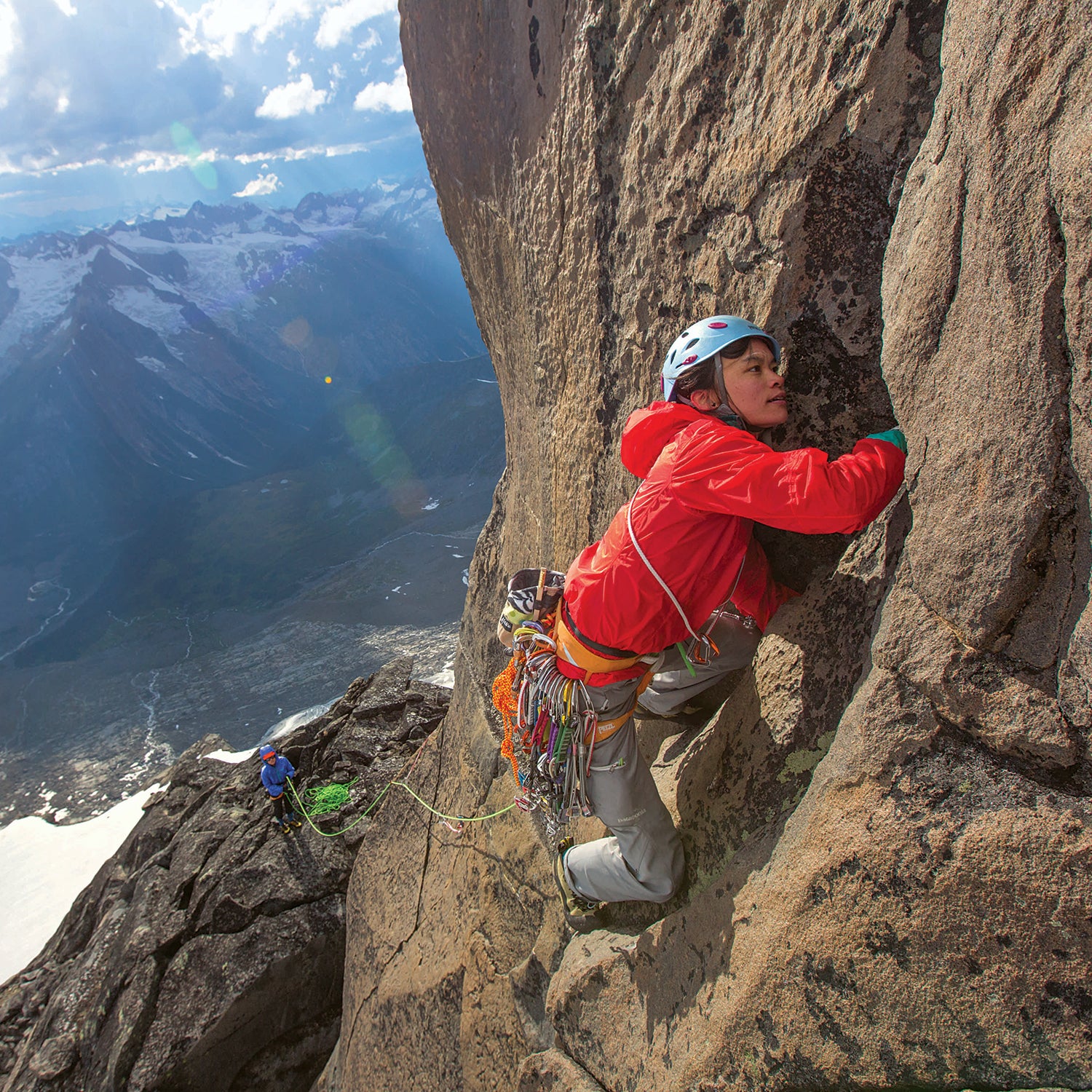Remember the rain and wind shells of yore? Stiff and a little crinkly,╠řwith Velcro cuffs and micro-fleece chin guards? We╠řhardly can. Performance apparel has evolved over the past decade, and╠řjackets are lighter, thinner, and more streamlined than ever.
In fact, apparel makers have grown so obsessed with shaving weight that a╠řprofusion of technical shells have appeared weighing╠řless than a smartphone, packing small enough to fit in your back pocket, and designed to make you feel like youÔÇÖre wearing nothing at all.
Of course, you might reasonably╠řwonder how these╠ř├╝ber-pared-down jackets╠řmanage to stand out from one another, and how light╠řthey can go before they start to lose functionality.╠řWe rounded up a few╠řto find out.
The North Face Flight RKT ($160)

This shell is so freakishly thin that the cuffs and bottom hem are pretty much all you notice. ItÔÇÖs made from a single layer of DWR-treated, ten-denier ripstop nylonÔÇöenough to block wind and repel light precipitationÔÇöand folds into an arm pocket roughly the size and shape of╠řa peanut butter and jelly sandwich (though itÔÇÖs much lighter: just 2.8 ounces for╠řthe menÔÇÖs version).
As with most featherweight apparel, the Flight RKT╠řmakes some compromises. There are no adjustment cords, and the fabric is more snag-prone than some other shells in the same category. But if youÔÇÖre going fast and light for long distances, youÔÇÖll be hard-pressed to find a more lightweight option.╠ř
The North Face╠řbills the Flight RKT as a running shell, and the jacket performs well in high-output situations that call for protection without the encumbrance of╠řlayers. Given how thin it is, we'd╠řbe wary of taking it on scrambling missions where we know we'll╠řbe dragging╠řour gear over╠řrock.
Mountain Hardwear Ghost Lite ($100)

The Ghost Lite is similar to the Flight RKTÔÇöitÔÇÖs made from DWR-coated╠řnylon╠řand designed primarily for runningÔÇöbut itÔÇÖs a bit more built up. The menÔÇÖs version is 3.1 ounces,╠řand itÔÇÖs longer╠řand╠řbaggier. The loose fit is a boon if you want to wear your shell over lots of layers, but can also impede movement. ThatÔÇÖs partially alleviated by the cinched hem and a Velcro tab to fold away the hood.
The 15-denier ripstop nylon has a soft, buttery feel, and itÔÇÖs substantial enough to add╠řconfidence in brambles and on abrasive rock. When folded into its chest pocket, the Ghost Lite is a tad bigger than the North Face jacket; itÔÇÖs also slightly easier to zip up, since the zipper falls on the side of the pouch instead of across the top. The slightly longer fit also makes this jacket a great trail-to-town crossover piece; itÔÇÖll keep you warm and relatively dry in the hills but wonÔÇÖt look (as) out of place in a coffee shop or bar.
Patagonia Houdini ($100)

The Houdini is sleek and trim, hitting right at the hip, without╠řexcess fabric. But at 3.6 ounces in the menÔÇÖs version, itÔÇÖs the heaviest jacket here. ThatÔÇÖs because it doesnÔÇÖt skimp on features or durability. In addition to a chest pocket, it has a drawcord╠řat the waist and in the hood, and the fabric is 15-denier nylon, the same as the Ghost Lite.╠ř
The papery quality of the Houdini offers superior╠řnext-to-skin comfort; you can wear it over a short-sleeve shirt without that╠řclammy shell sensation against your arms. It also makes the jacket a little more rugged than the others we looked at. The Houdini╠řis billed as a trail-running shell, but we╠řwouldnÔÇÖt think twice taking it climbing or scrambling.
The Upshot
The lightweight, DWR-treated wind shell deserves╠řa place in your pack. ItÔÇÖs the perfect layer for windy summits, drizzly mornings, and other occasions when a╠řthick fleece or╠řfull-on waterproof piece would be overkill, and it's great insurance against unexpected storms.╠řIt wonÔÇÖt keep you from getting soaked in a downpour, but the DWR coating goes further than youÔÇÖd expect.
That said, there's no need to shell out extra cash just to save a few tenths of an ounce. All of the shells in this review function the same, differing only in price. They weigh within an ounce of one another, they're made with similar fabrics and DWR finishes, and they have similar features.╠řIf you're tackling╠řfast and light missions or long hauls in high-alpine╠řterrain, it's worth the added expense to have the absolute lightest, most packable gear. But the average athlete could be served just as well with a slightly heavier, less expensive option.╠řBuy the one that fits best, and you can't go wrong.


